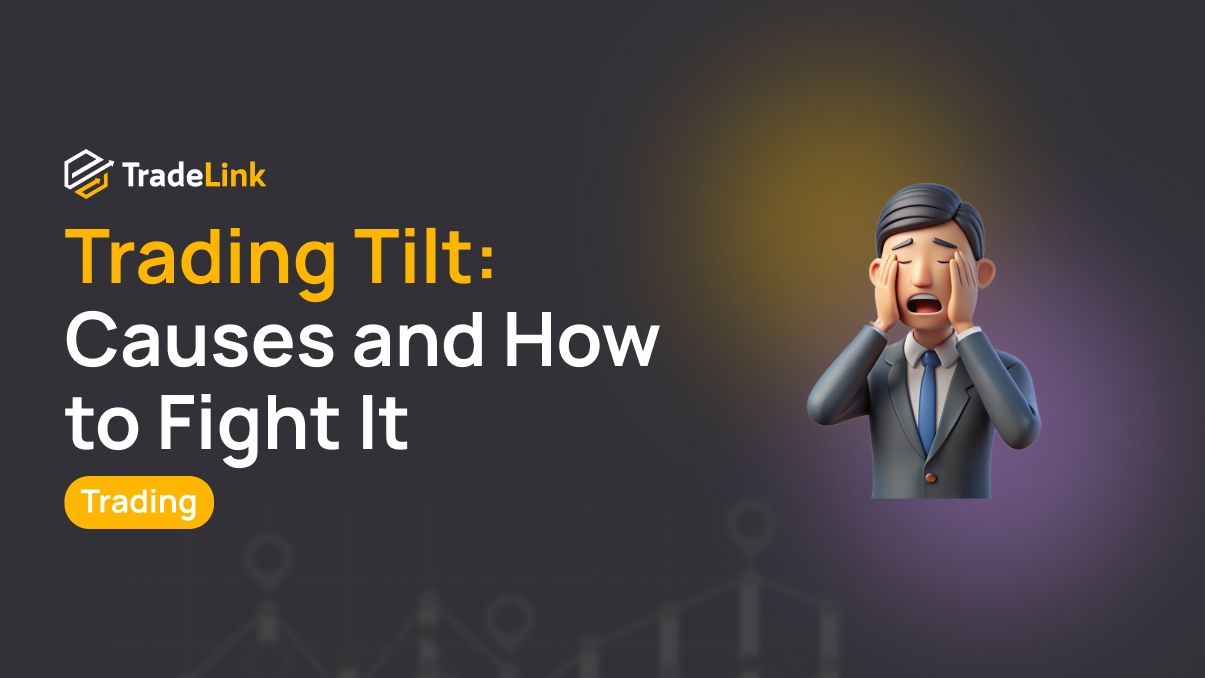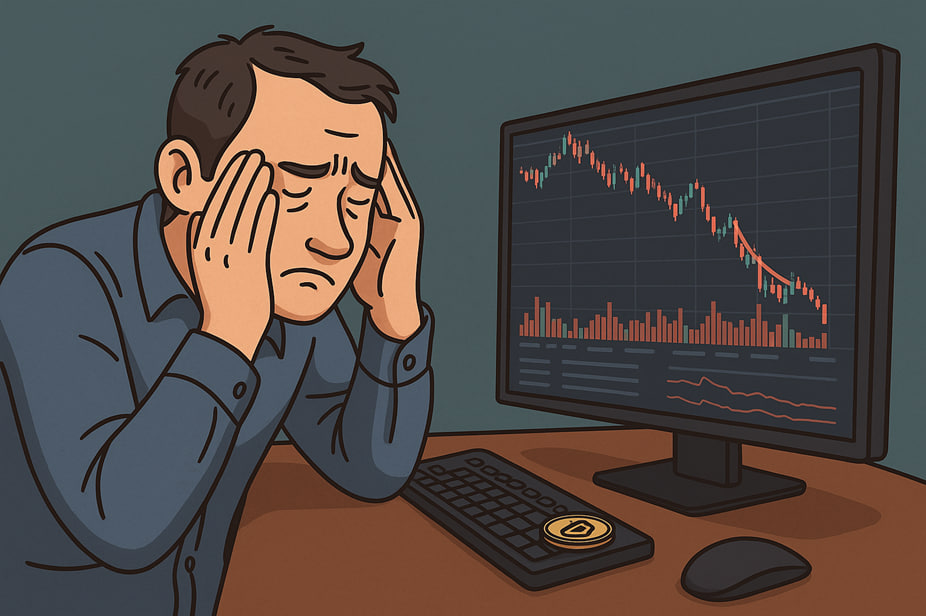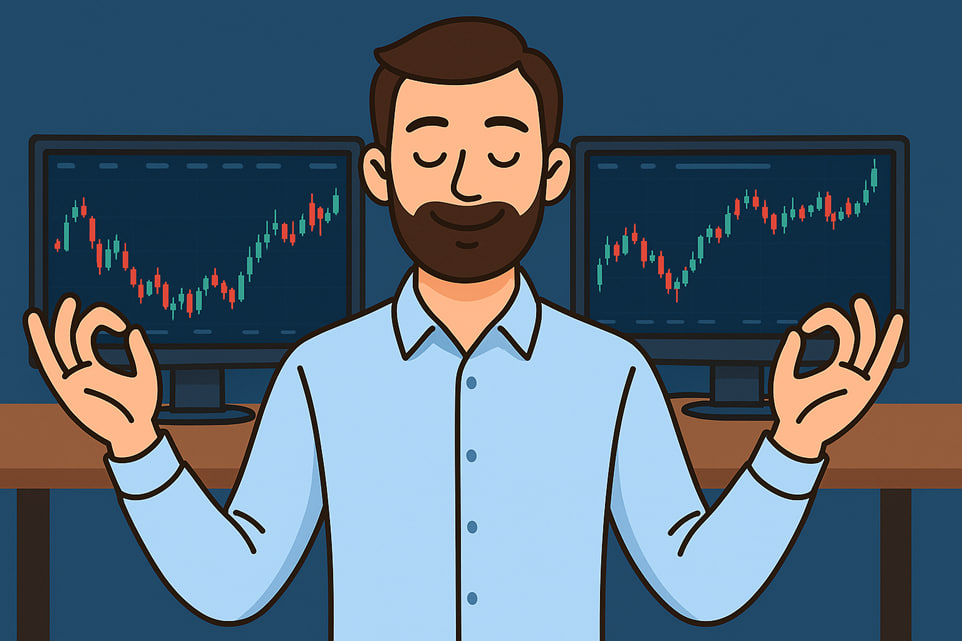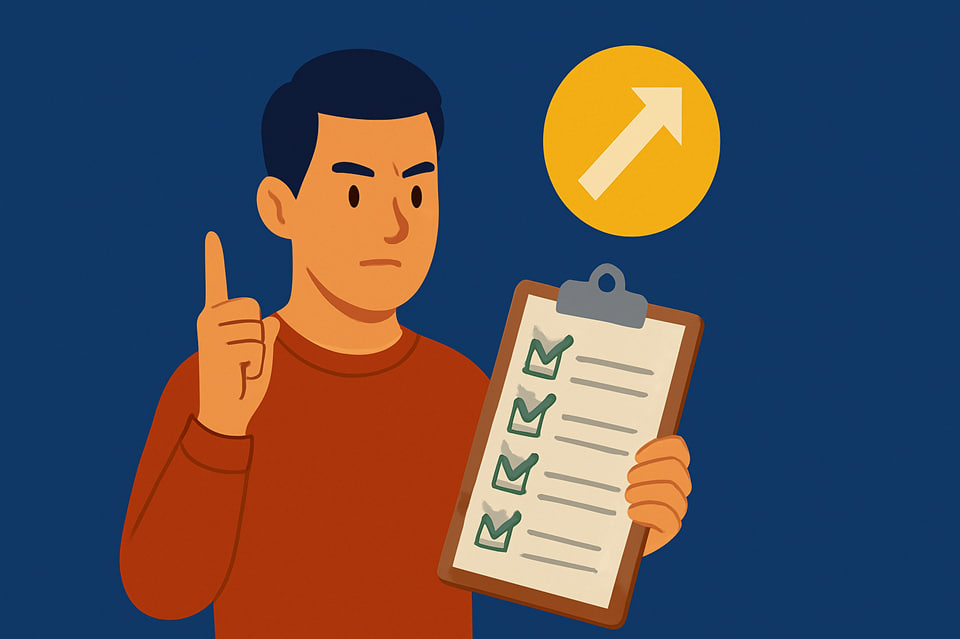Trading Tilt: Causes and How to Fight It

Contents
- Introduction
- What is Tilt
- Causes of Tilt
- How Tilt Affects a Trader
- How to Recognize Tilt
- How to Manage Tilt
- Preventing Tilt in Trading
- Conclusion
Introduction
A Brief Introduction to the Topic
Trading is not just about numbers and charts. It’s directly tied to a person’s mental and emotional state. Even the most well-thought-out strategy can fail if a trader loses composure. One of the most dangerous states for a trader is tilt. It can lead to significant losses, even if things were going well before.
The Importance of Emotional Control in Trading
When a person trades on the market, they constantly face risk. The market follows no one’s rules, and even professionals experience losses. It’s crucial to remain calm in any situation. Without emotional control, even simple decisions can turn into mistakes. That’s why psychology plays as important a role as market knowledge.
What is Tilt

Definition of “Tilt” in Trading
Tilt is a state in which a person loses self-control. Instead of following a plan, they act under the influence of emotions. This behaviour resembles gambling — a desire to “win it back” or quickly recover lost funds. In this state, logical thinking fades, and the trader starts making mistake after mistake.
How Tilt Affects Decision-Making in Trading
During a tilt, a person begins to open trades without proper calculations. They ignore risk, break their own rules, and abandon capital protection. These actions can quickly result in substantial financial losses. Even if the trading strategy is sound, a trader in tilt acts impulsively and no longer follows it.
Examples of Situations Where Traders Can Go into Tilt
-
A sharp loss: After a major failure, the trader wants to recover the money quickly and enters a new trade without analysis.
-
Missed profit: If the price moved as expected but the trader didn’t enter the trade, they may start chasing the market emotionally to “make up for the lost opportunity”.
-
A series of small losses: Even a few losing trades in a row can throw a trader off balance.
-
Fatigue: After long hours of trading, attention wanes, making the trader more susceptible to emotional fluctuations.
Causes of Tilt
Emotional Factors
Tilt often arises from intense emotions.
- Fear clouds judgment.
- Greed encourages excessive risk-taking.
- Frustration pushes toward rash decisions.
All of these emotions interfere with sticking to a strategy and break focus.
Losing Trades and Their Psychological Impact

Each losing trade can erode a trader’s confidence. When losses pile up, the trader may lose faith in their abilities. They stop seeing the market clearly and start jumping from one decision to another. This is a direct path to tilt.
Fatigue and Trading-Related Stress
Trading demands constant attention and quick reactions. If a person is tired or under pressure, they become less focused. Stress increases anxiety and sharpens emotional responses. All of this raises the likelihood of entering an unstable mental state.
How Tilt Affects a Trader
Taking Unjustified Risks
A trader in tilt no longer thinks about capital safety. They might suddenly increase position size or open multiple trades in a row without calculation. At that point, the market situation isn’t being assessed — the goal becomes to win back losses or prove something to oneself. This leads to more significant losses because emotions, not logic, are in control.
Ignoring the Strategy
Every successful trader follows a clear system. It helps them make decisions without panic and avoid unnecessary risks. But in tilt, the trader forgets all the rules. They stop paying attention to signals, break entry and exit conditions. Even a previously profitable strategy gets completely disregarded in their mind.
Loss of Discipline and Control Over Actions
Discipline is the foundation of consistent trading. Without it, the trader turns into a gambler. In tilt, they lose all sense of proportion — they skip stop-losses, rush into new trades, and stay in the market even when exhausted. These actions appear to be an attempt to “fight” the market, but in reality, they lead to even more errors.
How to Recognize Tilt
Signs of Tilt in a Trader
Several symptoms can recognize tilt:
- A strong urge to “win back” after a loss.
- Trades are opened without a clear plan.
- Position sizes are increased abruptly.
- Calmness and confidence disappear.
- Irritation or anger toward the market appears.
If a person notices even one of these signs, it’s best to pause and step away from the trading terminal.
How to Tell That Emotions Are Overpowering Rational Thinking
Emotions can quietly take over without a trader realizing it. At first glance, everything appears to be under control. But behaviour gradually changes. For example, someone opens a trade immediately after a loss, just to “get even.” They stop looking at signals, ignore news, and don’t wait for confirmations. Their goal is to recover money at any cost — this is a red flag.
Another example: a trader sees a profitable position but doesn’t close it, hoping to make even more. Although they used to follow their plan strictly, greed is now driving their decisions. When the market reverses, they lose everything but still don’t exit, hoping for a miracle. At this point, there’s no analysis left — only emotion.
It’s also worth monitoring internal states. If irritation, anger, or a sense of urgency appear, that’s a signal. These are the moments when traders often break rules, ignore risks, and lose concentration. They may open several trades in a row without a plan, just to feel some control. This is a direct path to tilt.
To avoid this trap, regularly ask yourself simple questions: “Why am I opening this trade?”, “Does it align with my strategy?”, “How do I feel right now?”. If you can’t answer clearly or feel tension, it’s better to take a break. Even a short pause can restore clarity.
How to Manage Tilt

Emotional Self-Control Techniques
The first step is to acknowledge your emotions. The trader should honestly say to themselves: “I’m angry” or “I’m scared.” Admitting the problem helps regain control. Then, it’s essential to pause, breathe, and avoid rushing into decisions. A simple yet effective question is: “Would I open this trade if I were calm?” This helps bring logic back into the process.
Taking Regular Breaks and Rest Periods
Fatigue is a common cause of dizziness or vertigo, also known as tilt. Long hours in front of charts reduce focus and increase irritability. That’s why taking breaks is crucial. Even 10 minutes of silence can clear the mind. Better yet, plan your day with scheduled breaks. This isn’t weakness, it’s a way to stay productive and avoid unnecessary mistakes.
Having a Clear Plan and Sticking to Discipline
A plan is the anchor that keeps a trader steady. It should include rules for entering and exiting trades, acceptable risk levels, and clear goals. With a solid plan, it’s easier to resist impulsive decisions. Discipline isn’t about rigidity — it’s about consistency. It helps stay on track even in high-pressure moments.
Using Technical Analysis and Risk Limits
Technical analysis provides clear signals. It eliminates guesswork and enables calm, objective trading. It’s also vital to use risk limits, such as stop-losses, daily loss caps, and maximum position sizes. These simple tools prevent wiping out the deposit and protect from impulsive actions.
Applying Psycho-Emotional Techniques: Meditation, Visualization, and More
Many traders begin their day with a brief meditation. It helps focus, reduce anxiety, and let go of unnecessary tension. Attention shifts from external noise to internal awareness. After this practice, traders react more calmly to market fluctuations and are less prone to panic.
Visualization is another effective method. A trader mentally rehearses how they will behave in a stressful situation. For example, the price drops sharply, but they stay calm and follow their strategy. This mental practice prepares the brain to respond correctly in real trading.
An emotions journal can also be helpful. At the end of each session, the trader records their emotional state for the day — whether they felt confident, experienced fear or irritation, and whether they remained calm. This journal helps identify emotional triggers and find ways to respond more rationally. Over time, it strengthens mental resilience and lowers the chances of tilt.
Preventing Tilt in Trading
How to Build a Self-Control System and Avoid Stressful Situations

To avoid tilting, it’s essential to establish a consistent routine. The day should begin not with chaos, but with preparation — a light exercise, a brief meditation, or a simple focus routine. Before trading begins, take a moment to review your plan. After trading, take time to rest.
The workday shouldn’t be endless. Set a time limit for trading in advance. Once that limit is reached, close the platform and move on to something else. It could be a walk, exercise, or just a break from the screen.
It’s helpful to write out your rules: when to enter a trade, when to exit, and how much to risk. These guidelines help resist emotional decisions. If stress symptoms appear, use the techniques mentioned earlier: meditation, visualization, and journaling. These help regain control in time and prevent stress from taking over.
Consistent self-control begins with small steps: regular rest, adhering to a routine, and remaining calm in the face of failure. A strong system develops over time, consistently delivering results.
The Role of Proper Mindset and Mental Approach to Trading
Trading is not a game or a way to “get rich quick.” It’s a profession that requires calmness, patience, and adherence to rules. When someone is focused on long-term success, they worry less about a single loss. The right mindset helps see the market clearly and make thoughtful decisions. Confidence comes when a trader knows they are following their plan.
Conclusion
Tilt is a dangerous state that prevents sound decision-making and can destroy even the best strategy. To avoid this trap, you must monitor your emotional state, take breaks, strictly follow your rules, and avoid rushing into trades. The calmer the trader, the stronger their position. Those who can control their emotions will always stay one step ahead.